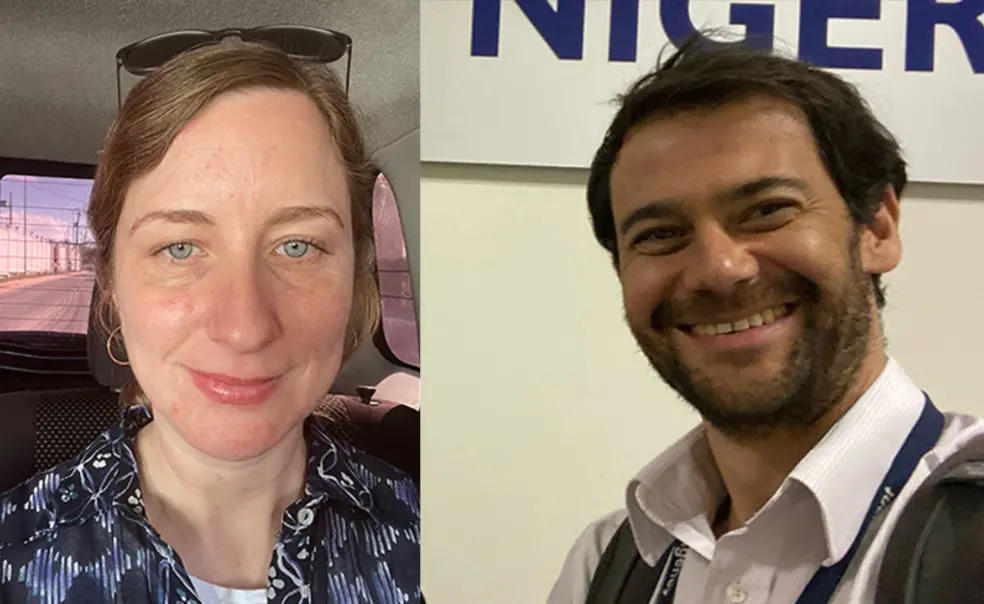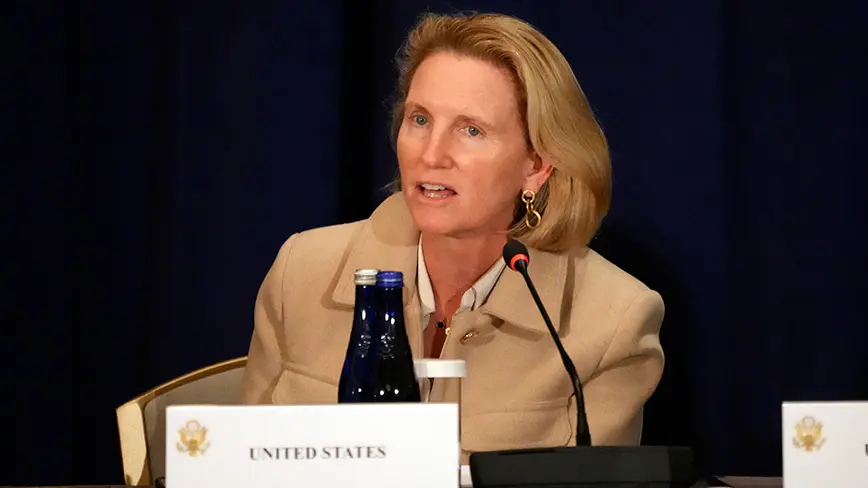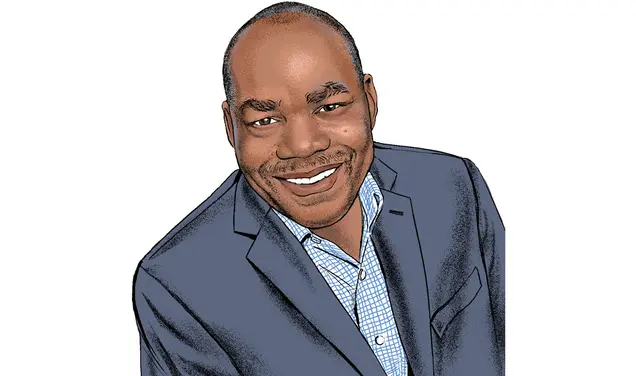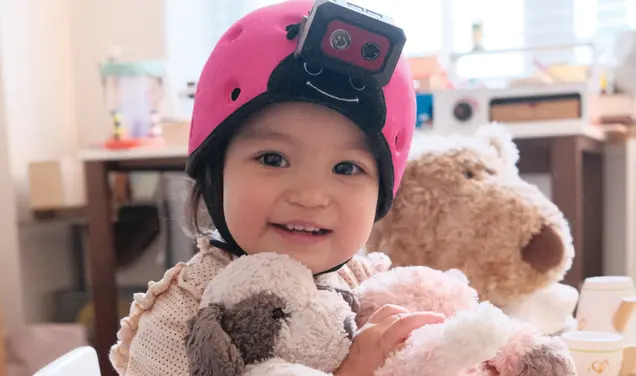After USAID Demolition, These Alumni Are Keeping Its Projects Alive
Caitlin Tulloch *15 and Rob Rosenbaum *13 are finding donors for the most cost-effective and life-saving USAID projects through their Project Resource Optimization initiative
Shortly after the Trump administration announced in January it was planning to close the U.S. Agency for International Development, Caitlin Tulloch *15 began receiving calls from private foundations asking which of the organization’s thousands of initiatives they should try to save.
Tulloch, who received an MPA from Princeton’s School of Public and International Affairs, had worked in the agency’s Office of the Economist for two years, driving the adoption of evidence-based approaches to increasing the efficacy of foreign aid.
“When things started falling apart, they asked, ‘If we’re going to do some amount of giving in response, what would be the things you would suggest as the most cost effective?’”
The urgency of the moment was clear to anyone who’d long respected USAID’s work. A team of international researchers published a study in June estimating as many as 14 million people globally may die in the next five years as a result of canceling most of the agency’s work.
Plus, as on-the-ground organizations are forced to close, local know-how and infrastructure will also evaporate — making it all the more difficult to restart development later, when or if the funding gets turned back on, according to alumni interviewed for this piece.
The foundations needed guidance. “They’d never had to assess this many potential giving opportunities at once, with so little information and so much uncertainty,” Tulloch says.
So she sifted through publicly available data on thousands of USAID projects and used her frameworks to pinpoint the most urgent and impactful opportunities. The result was PRO — the Project Resource Optimization initiative, in which Tulloch and some colleagues built a curated database of programs to serve as a resource for interested donors.
“We knew how to read the institutional data and say, ‘These are the things that, if killed, would cause the most loss of life,’” Tulloch says, “or, conversely, if funded with private money, would save the most lives per dollar spent.”
One of those colleagues is Rob Rosenbaum *13, also a SPIA graduate. Rosenbaum had been working in another USAID department, Development Innovation Ventures (DIV), created during the Obama administration to fund people and organizations trying to invent better approaches to aid.
“We’re trying to save lives and buy time,” Rosenbaum says of PRO. Few local organizations have sufficient cash reserves to carry them through the financial drought. Many of PRO’s projects are seeking a sum that could keep them afloat for a year or so, giving them, as Rosenbaum explains, “medium-term equilibrium so we can make more strategic decisions about how this type of work should continue into the future.”
PRO, which now works out of a Washington, D.C., think tank, the Center for Global Development, acts as a matchmaker. Its team does the technical work of vetting and surfacing the programs. Once donors decide on a project, PRO connects them with the relevant service organization to arrange direct funding. (More recently, PRO has also begun collecting small-dollar donations, which will be aggregated to support some of the projects.)
By the end of June, PRO had identified 69 high-impact programs and matched backers to 22 of them, mobilizing $25 million in private money — including $1 million from a Princeton alumna to provide high-quality seeds to farmers in Ethiopia. Other projects that have found support include a malaria care initiative in sub-Saharan Africa (price tag: $3 million); a childhood immunization project in Nigeria (price tag: $1.8 million); and a research effort in India exploring the use of artificial intelligence to improve maternal and newborn health outcomes (price tag: $375,000).
Another 43 projects, however, still need funders. And for some, time is running out.
Tulloch and Rosenbaum were uniquely suited to take on this rescue mission. While the humanitarian sector of the 20th century was frequently criticized for having more good intentions than empirical rigor, the field has recently seen a growing emphasis on using data to produce better results.
“In the last 20 years,” Tulloch says, “there has been [a] revolution” in how aid strategies are developed, and both she and Rosenbaum have been part of it.
After studying economics as an undergraduate at the University of Chicago, Tulloch worked at MIT’s Poverty Action Lab, doing cost-effectiveness analyses of education programs abroad.
At SPIA, she developed an interest in the breadth of factors that go into the design of public and international policy. Then she spent eight years at the International Rescue Committee, a global relief organization, creating data-driven strategies to inform how programs were designed, and then joined USAID in 2023 to bring those approaches to federal aid.
“IRC was able to really increase the impact per dollar spent of some of their flagship programs,” Tulloch says. “We were hoping to do the same thing at USAID, both to produce the evidence, but [also] to find a way to bring that into the decision-making processes.”
After studying history at Colby College, Rosenbaum ran a children’s charity in South Africa. SPIA gave him the quantitative skills to measure actual impact and achieve results that could scale. “That changed the trajectory of my career,” he says. “I became interested in the innovation side: How do we do things better, faster, and cheaper?”
After gigs at a research center at Harvard and a Boston startup, Rosenbaum joined the USAID COVID Response Team in 2020, analyzing data to improve the distribution of vaccines overseas.
Two years ago, he joined the DIV venture fund. “It was the perfect culmination of everything I had worked on,” Rosenbaum says. There he used empirical approaches to find promising new technologies and strategies. “I loved that job.”
Both Tulloch and Rosenbaum separated from USAID in February, after going through the rounds of layoffs and reinstatements that many federal workers have experienced as a result of the White House trying to slash agencies and shrink the federal workforce.
PRO’s goal isn’t only to save lives. It’s also to preserve local capacity.
“The window is closing for many projects,” Tulloch says. Four of the entries on PRO’s initial list have already been struck off. “Even if private funding came through, they’ve already fired the staff, vacated the offices, and withdrawn from the communities they were serving.”
Also at risk is hard-won political capital. Rosenbaum cites the example of a vaccination program in Mali, where a local organization had spent decades building trust with remote communities who are leery of outsiders, including medical systems, local authorities, and international aid workers.
“They built up this very successful program, measured by the number of children they’re able to reach,” Rosenbaum says. But after USAID pulled its funding, “they told us, ‘If we have to shut the doors and walk away, we’re not going to get invited back. It will be really hard to operate in this region.’”
While much of the support PRO has mobilized has come from large institutions, individual philanthropists have also stepped up, including a high-net-worth couple on the West Coast who decided to fund a $1.7 million emergency medical care project for pregnant women and young children in Burkina Faso.
“There were a lot of people saying, ‘This is horrific. What can we do?’” Tulloch says. “We happened to arrive at the right time with a tangible answer.”
One of those was a Princeton alumna who graduated in the 1970s, whose interest was galvanized after reading an article about food languishing in an overseas warehouse because aid stoppages had suspended distribution.
“The very idea that America would walk away from its commitments to starving people was more than I could abide,” says the retired attorney, whose name PAW is withholding because she wanted to be an anonymous donor.
She heard about PRO through a fellow philanthropist and reached out to Rosenbaum, who helped her sort through various options and connect to the relevant organization once she’d decided to underwrite the Ethiopian seed program.
“If we as individual citizens have the capacity to tackle these problems, to chip away at them little by little, I feel we must,” she says.
While continuing to work on PRO, Tulloch has since taken a new job as the head of research at GiveDirectly, a nonprofit that facilitates individual donations to improverished people around the world. Rosenbaum continues to lead PRO while also trying to set up a private organization to continue DIV’s work — both to raise money for the projects DIV was backing, and to train other large organizations on how to run their own innovation and venture shops.
“This field needs an investment vehicle,” Rosenbaum says. “So much of foreign aid is risk-averse, because everyone’s afraid of the scrutiny” should a new project fail. At DIV, he says, “we had the great luxury of being empowered to go out and take some of those risks.”
Tulloch and Rosenbaum acknowledge that PRO’s work is just a drop in the bucket compared to the total assistance USAID used to provide. (The agency’s obligations in 2024 totaled $35 billion. Secretary of State Marco Rubio said only about 1,000 of USAID’s 6,200 contracts will be absorbed by the State Department, while the rest will be cancelled.)
But their mission has been driven by the sensibility embodied in the starfish tale — in which a person is walking down a beach where thousands of starfish have washed ashore. As they pick up the creatures and toss them back into the sea, someone asks what difference it will make, since they’ll never be able to save them all. The thrower points to the starfish in their hand and says, “It makes a difference to this one.”
“We can’t fix everything,” Tulloch says. “But there are some things that, even in their small and incremental nature, are hugely meaningful.”
“If you vaccinate a child, they are protected against those diseases into the future,” she continues. “For that child, the difference is still made.”















1 Response
Michael E. Morandi *83
4 Months AgoAlums Committed to Public Service
I have met Caitlin and corresponded with Rob. As an MPA graduate, class of 1983, I am impressed with their commitment to public service. They represent the University motto. They are truly professional. I wonder if Princeton alumni could set up a fund that pools resources to be distributed to the worthy causes that they have identified as having the biggest bang for the buck. Surely there are alums who know how to do this.